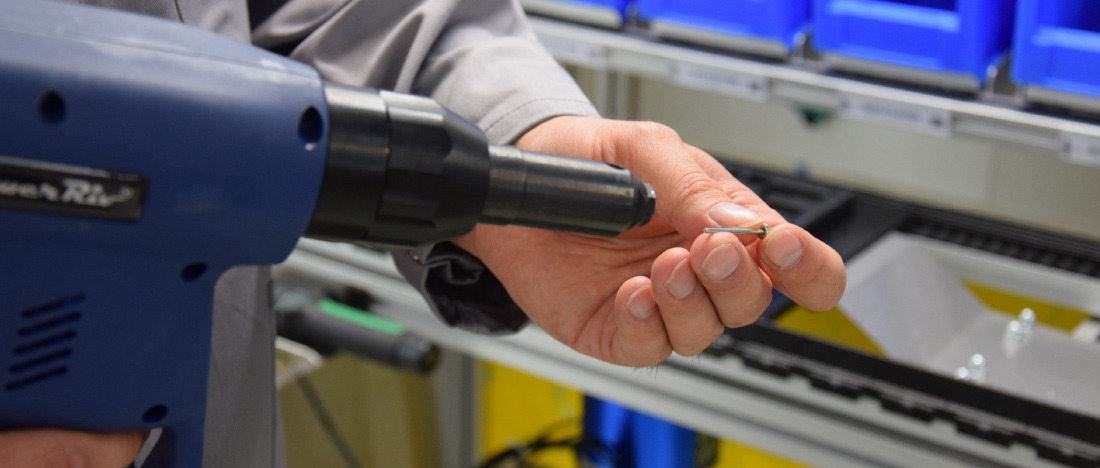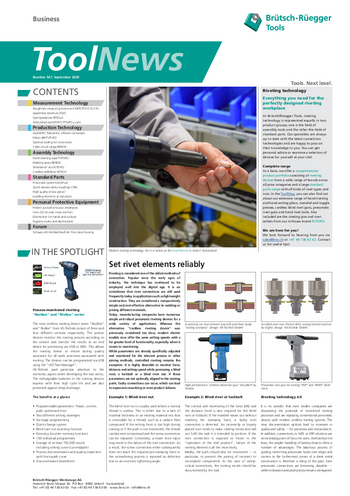Nr. 547 - Set rivet elements reliably
Riveting is considered one of the oldest methods of connection. Popular since the early ages of industry, the technique has continued to be employed well into the digital age.
It is no coincidence that rivet connections are still used frequently today in applications such as lightweight construction. They are considered a comparatively simple and cost-effective alternative to welding or joining different materials. Today, manufacturing companies have numerous simple and robust pneumatic riveting devices for a wide variety of applications. Whereas the alternative "cordless riveting device" was previously considered too slow, modern electric models now offer the same setting speeds with a far greater level of functionality, especially when it comes to monitoring. While parameters are already specifically adjusted and monitored for the relevant process in other joining methods, controlled riveting remains the exception. It is highly desirable to monitor force, distance and setting speed while processing a blind rivet, a lockbolt or a blind rivet nut. If these parameters are not optimally aligned to the riveting point, faulty connections can occur, which can lead to expensive reworking or even product failures.
Example 1: Blind rivet nut
The blind rivet nut is usually used where a normal thread is useless. This is either due to a lack of material thickness or an existing material mix that is unsuitable for a thread, such as a carbon fibre compound. If the setting force is too high during riveting or if the path is not monitored, the thread can become compressed and the screw connection can be impaired. Conversely, a lower force input may result in the failure of the rivet connection. As a result, the screw connection either subsequently does not reach the required pre-clamping force or the screwdriving process is reported as defective due to an incorrect tightening angle.
Example 2: Blind rivet or lockbolt
The control and monitoring of the force (kN) and the distance (mm) is also required for the blind rivet or lockbolt. If the mandrel wears out without reaching the clamping force, a faulty rivet connection is detected. An incorrectly or loosely placed rivet tends to make rattling noises and will not fulfil the task it is intended to perform. If the rivet connection is exposed to forces in the "operation of the end product", failure of the riveting element is all the more likely. Ideally, the path should also be monitored — in particular, to prevent the joining of incorrect or incomplete components. In the case of safety-critical connections, the riveting results should be documented by the tool.
Riveting technology 4.0
It is no wonder that even smaller companies are discovering the potential of monitored riveting processes and are replacing conventional pneumatic devices with modern cordless riveting systems. The new documentation options lead to increases in quality and safety — for processes and end products. In addition, connections to MES or ERP solutions are an increasing point of focus for users. And last but not least, the simpler handling of battery devices offers a number of advantages: The laborious process of guiding metre-long pneumatic hoses over edges and corners to the furthermost corner of a sheet metal construction is therefore a thing of the past. Even pneumatic connections are becoming obsolete — while motivation and productivity remains unimpaired.



